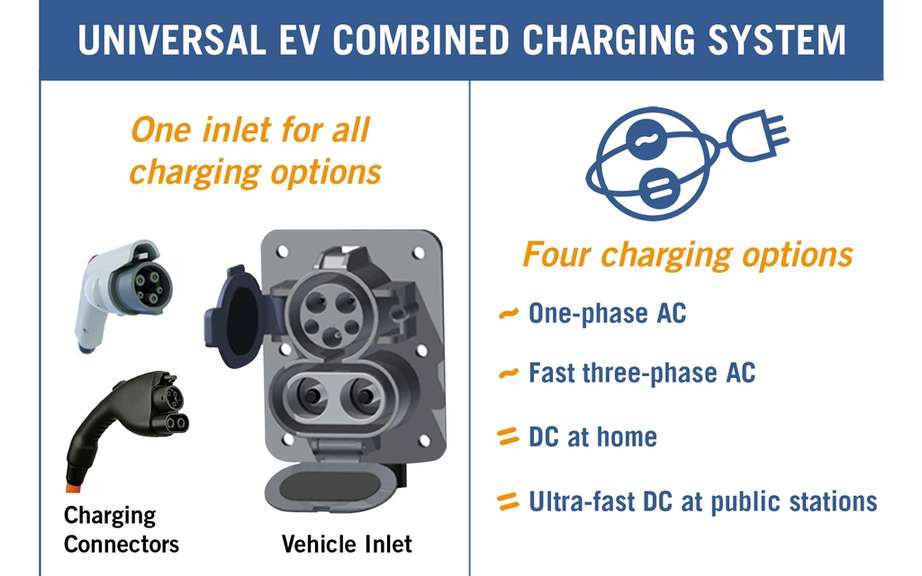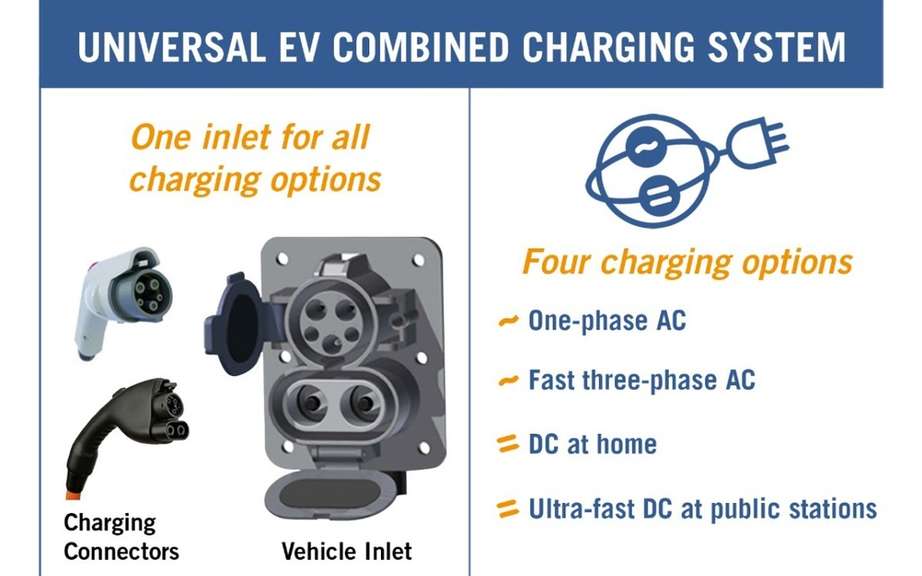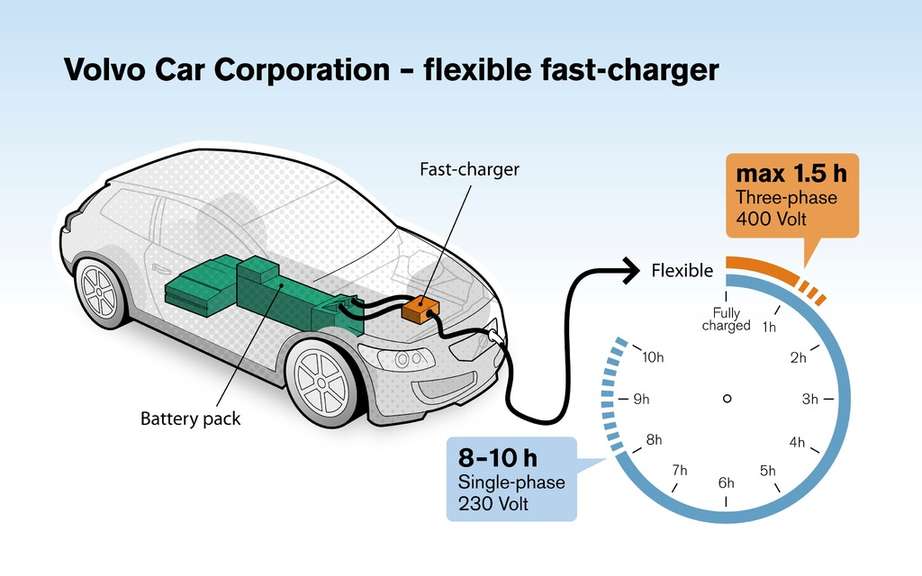Demonstrations of fast charging at EVS26
Automakers will the demonstration of a system of fast charging for electric cars EVS26
A system load combination allows fast loading and alternating current through a single charging socket
Automakers in the United States and Germany will be the demonstration of a technology for fast charging that will charge most electric cars using compatible systems in as little as 15 to 20 minutes.
Audi, BMW, Chrysler, Daimler, Ford, General Motors, Porsche and Volkswagen have agreed to adopt a harmonized concept of charging socket intended to allow rapid recharge - concept called DC fast charging with charging system combines - for electric cars used in Europe and the United States.
The demonstrations load in real time will be conducted as part of the Electric Vehicle Symposium 26 (EVS26) which takes place from May 6 to 9
The system combines load allows single-phase AC load, fast three-phase AC load, the DC load for home and ultra-fast charging stations in DC Public load using the same socket on the vehicle. This way to allow customers to recharge their vehicles in most public charging stations, without regard to the source of power, and could accelerate the rapid adoption of affordable and common to all manufacturers standard.
The International Society of Automotive Engineers (SAE) has opted for the system load combined to develop a standard for fast charging which would multiply the capacities of load ca type 1 current. The standard will be officially published this summer. ACEA, the European Automobile Manufacturers Association, has also opted for the system load combination as charging interface AC / DC for all new vehicles built in Europe from 2017.
System design load has been developed according to evaluations and collaborative analysis of existing charging systems, ergonomic qualities of the connector and the preferences of European and American customers. The system has been developed based on international markets and allows to establish a common standard of electrical systems, controllers of charge, size of systems and safety devices.
The system optimizes the integration capabilities of the future developments of intelligent networks through methods of communication broadband, without regard to the location of the charging system in the world. This approach combined load will reduce the complexity of development and infrastructure, improve the reliability of the charging process, reduce the cost of ownership of vehicles and reduce costs associated with maintenance.
Combined load of systems are planned to be available in the market later in the year. All manufacturers concerned at present in development of vehicles that will use this system combines load. The first vehicles to make use of this system will be in the market in 2013.







